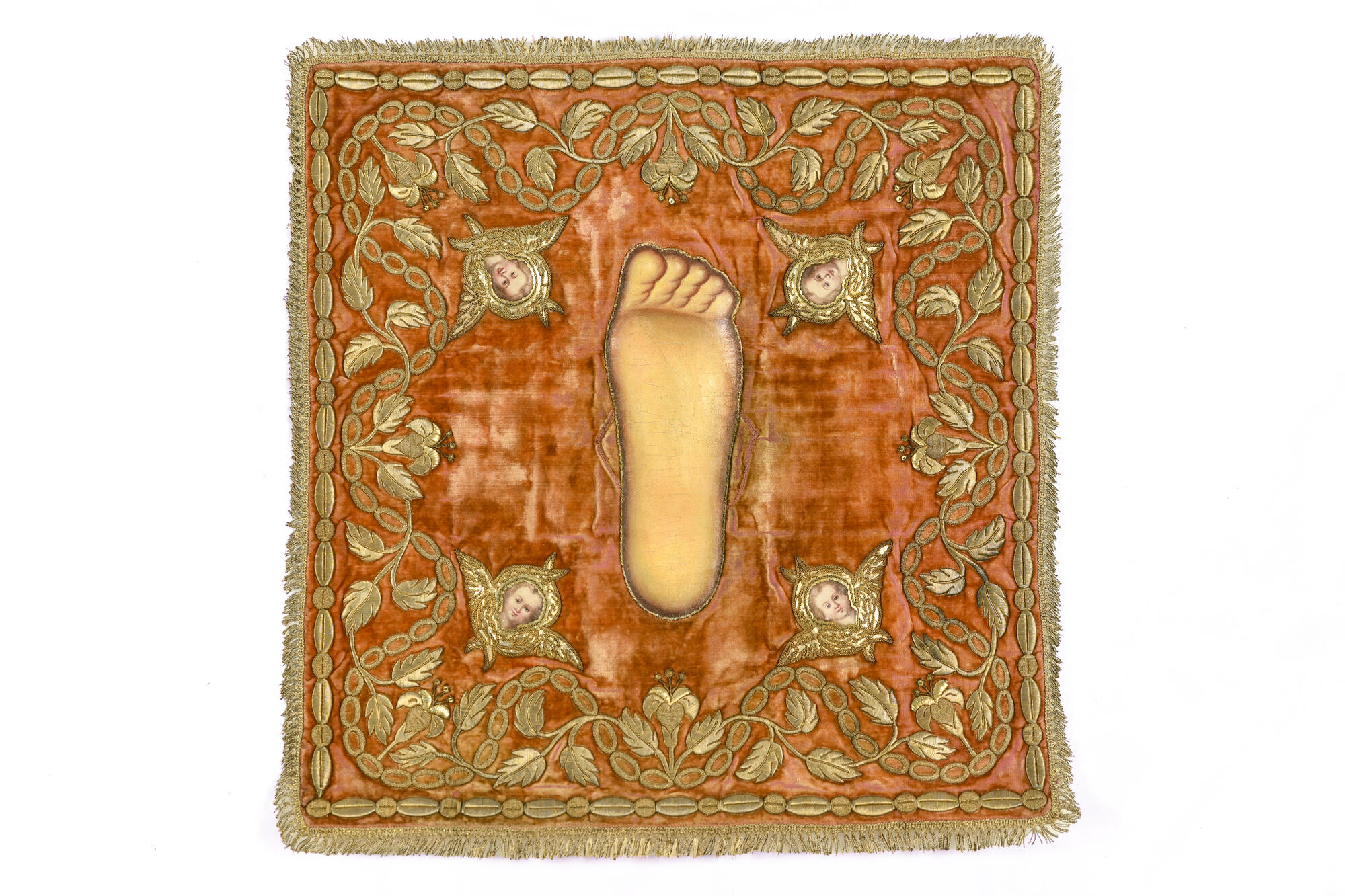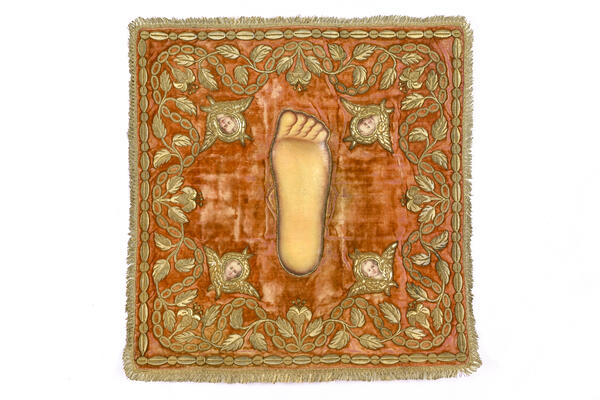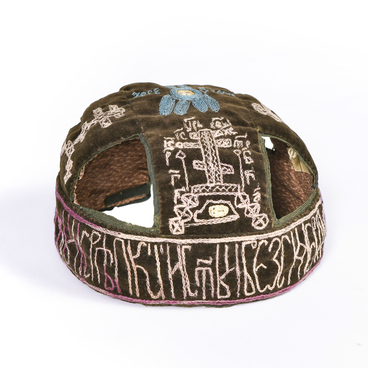In the Orthodox Church, an aёr is a small square veil that is used during the liturgy. It covers the sacred vessels for the sacraments — the diskos and chalice, as well as the Blessed Sacrament, that is, wine and bread for communion. The name “aёr” is often associated with the fact that the fabric covers the surface in the same way that air surrounds the earth. In addition, the veils for the Blessed Sacrament symbolize the blankets of the newborn Christ and the funeral shroud that wrapped his body after his execution on the cross.
The aёr can be large and small. It is traditionally sewn from expensive fabrics, for example, brocade or velvet. The front surface is decorated with embroidery, gold and silver threads, and pearls. Parishioners often present such items as a gift to the church.
The aёr from the Tobolsk Historical and Architectural Museum-Reserve is made of orange velvet and has a square shape. In the center of the front part, the foot of the Mother of God is depicted. It is a sign of her invisible presence in the temple. Images of angels are embroidered around it on four sides. There is a floral ornament with lily buds on the edges of the aёr. These flowers represent the Annunciation of the Blessed Virgin Mary — the moment from the Gospel when an angel appeared to her and informed her that her son would become the Savior of mankind.
A chain is depicted among the branches and leaves of the floral pattern, intertwining with them. Along the perimeter, the veil is decorated with a narrow strip of ornament, in which circles and ovals alternate. The item is bordered by a gold brocade fringe with tassels. The aёr lining is made of blue silk.
The patterns on the veil are made in the gold embroidery technique. Women were specially trained to make it in the monastery embroidery workshops. Most often, such embroidery was done by women from noble families who decided to go into a convent. The vestments of priests and details of church decoration were embellished with gold embroidery: banners, shrouds, bags for prosphora, and other items. Women from the royal and grand-ducal houses — wives, daughters and sisters of rulers — were also often engaged in such needlework.
The aёr can be large and small. It is traditionally sewn from expensive fabrics, for example, brocade or velvet. The front surface is decorated with embroidery, gold and silver threads, and pearls. Parishioners often present such items as a gift to the church.
The aёr from the Tobolsk Historical and Architectural Museum-Reserve is made of orange velvet and has a square shape. In the center of the front part, the foot of the Mother of God is depicted. It is a sign of her invisible presence in the temple. Images of angels are embroidered around it on four sides. There is a floral ornament with lily buds on the edges of the aёr. These flowers represent the Annunciation of the Blessed Virgin Mary — the moment from the Gospel when an angel appeared to her and informed her that her son would become the Savior of mankind.
A chain is depicted among the branches and leaves of the floral pattern, intertwining with them. Along the perimeter, the veil is decorated with a narrow strip of ornament, in which circles and ovals alternate. The item is bordered by a gold brocade fringe with tassels. The aёr lining is made of blue silk.
The patterns on the veil are made in the gold embroidery technique. Women were specially trained to make it in the monastery embroidery workshops. Most often, such embroidery was done by women from noble families who decided to go into a convent. The vestments of priests and details of church decoration were embellished with gold embroidery: banners, shrouds, bags for prosphora, and other items. Women from the royal and grand-ducal houses — wives, daughters and sisters of rulers — were also often engaged in such needlework.



